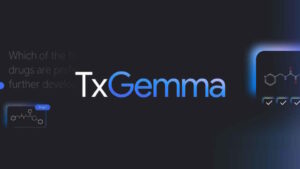Create Your Own DeepMind Barkour Robot

Exploring Google-DeepMind’s Barkour Project
Google-DeepMind is making significant advancements in the world of robotics through its Barkour project. This initiative focuses on quadruped robots that can rival the agility of real dogs. One exciting development is that the hardware designs for these robots have been made openly available to the public.
Meet the Barky Robots
The Barky robots are designed specifically for studying “animal-level agility.” These agile quadrupeds are not only impressive to watch, but they are also replicable. Interested individuals can access the necessary hardware information from the Google-DeepMind Barkour Robot repository on GitHub. This repository contains a variety of resources, including:
- CAD designs
- PCBA (Printed Circuit Board Assembly) designs
- Assembly instructions
The project is licensed under the Apache 2 license, allowing for easy replication. While the core software, including firmware and low-level coding, is available, higher-level artificial intelligence (AI) code is not included. However, Google-DeepMind has made it easier for developers to create their own software solutions.
The Barkour Agility Course
Since the onset of the Barkour project in 2022, researchers at Google-DeepMind have been working to establish benchmarks for comparing the performance of robotic quadrupeds. They created an agility course inspired by real dog agility competitions. This course features several challenges, such as:
- A pause table
- Weave poles
- An A-frame climb
- Jump obstacles
These challenges require the robots to navigate the course effectively while achieving the best time. The research team devised two main approaches to evaluate performance on this agility course:
Approach One: Specialist Locomotion Skills
In the first approach, researchers trained the robots using reinforcement learning techniques. This focused on developing specialized locomotion skills, which were then combined with a high-level navigation controller.
Approach Two: Generalist Locomotion Policy
The second method involved distilling the specialized skills into a Transformer-based generalist locomotion policy. This approach enables the robots to adapt to various terrains and modify their gait based on environmental conditions and their internal states.
Through these techniques, the custom-built quadruped robot called "Barky" was able to complete the course at approximately half the speed of a live dog, showcasing its capabilities in intricate navigation tasks. This performance was verified by training real dogs to undertake the same course.
Further Resources
For those interested in diving deeper into the details, the findings are documented in the paper titled "Barkour: Benchmarking Animal-level Agility with Quadruped Robots." A video summary is also available for a quick overview.
Additional Robotics Collections
Barkour is also featured as a part of the MuJoCo menagerie, a collection of high-quality, open-source robot models designed for the MuJoCo physics engine. This collection includes various quadruped simulations, such as:
- Unitree Go
- Anybotics ANYmal
- Boston Dynamics Spot
These resources serve as valuable tools for researchers and developers in the robotics community.
Where to Find More Information
For more insights, the following links are available:
- Barkour on GitHub
- MuJoCo Menagerie on GitHub
- Barkour Research Paper on arXiv (Link to be provided by the original source)
Whether you are a researcher, developer, or simply interested in robotics, the Barkour project offers a rich opportunity to explore the future of agile robotics, encouraging innovation and experimentation in the field.






